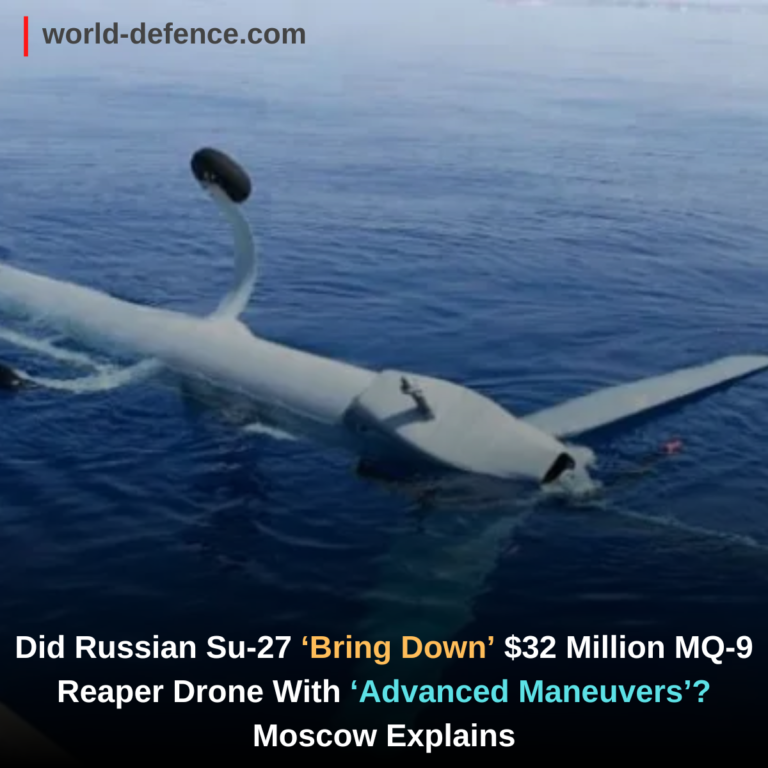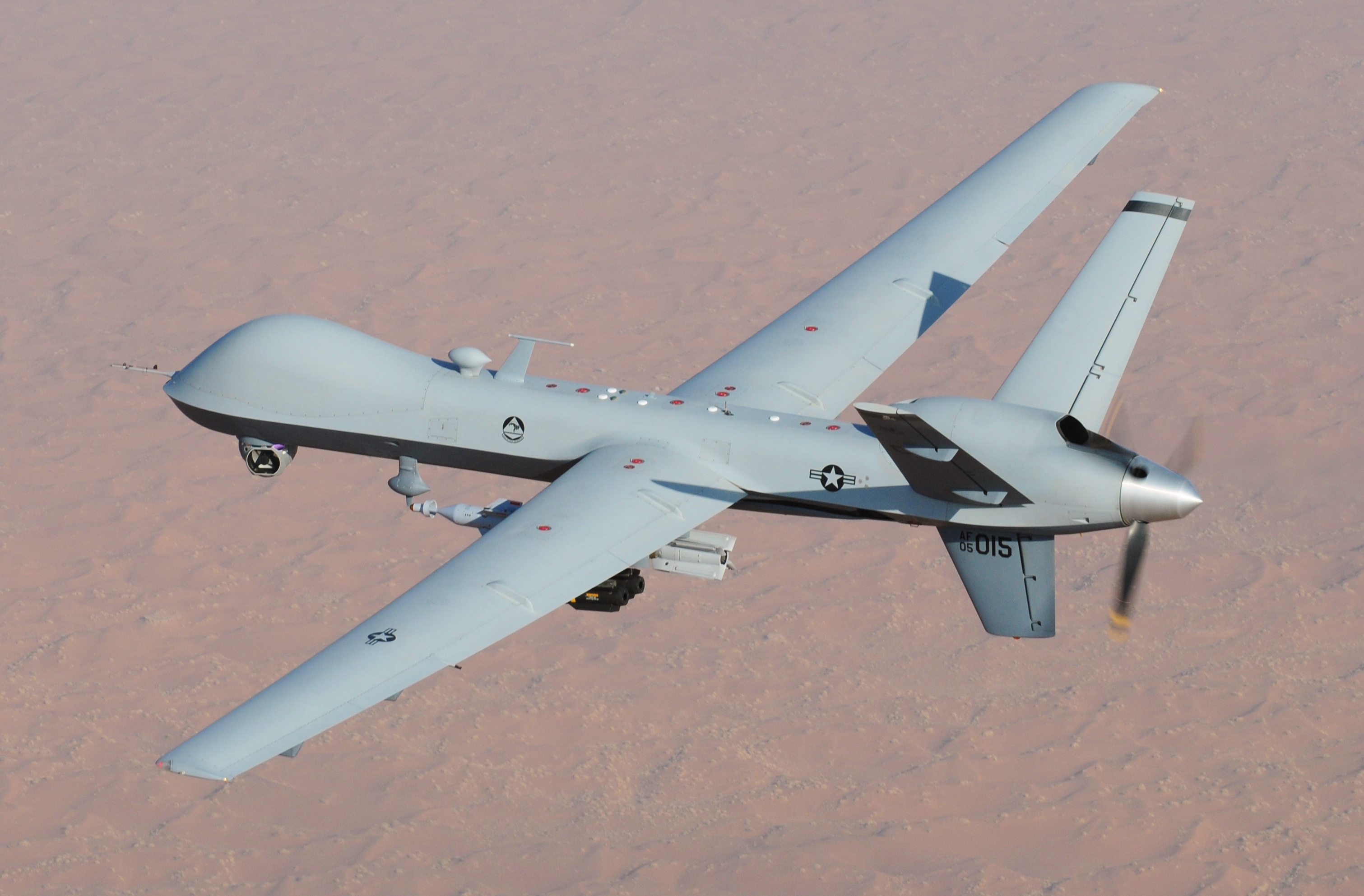
On March 14, the US Air Force announced that a Russian Su-27 fighter jet collided with the rear propeller of its MQ-9 Reaper drone, forcing the US to bring the drone down into the Black Sea.
Advertisement
The US State Department described the incident, which included two Russian Su-27 jets, as “unsafe and unprofessional.”
According to a press release from US Europe Command, the accident happened around 7:03 AM local time (EUCOM). The US military explained that two Russian Su-27s, codenamed Flanker by NATO, dumped fuel on and soared in front of the drone many times before one collided with the MQ-9’s propeller.
The US frequently uses drones to monitor the Black Sea, notably near Russia-occupied Crimea.
In a statement, US Air Force Gen. James B. Hecker, the commander of US Air Forces Europe-Air Forces Africa, said, “Our MQ-9 aircraft was conducting routine operations in international airspace when it was intercepted and hit by a Russian aircraft, resulting in a crash and complete loss of the MQ-9.”
Advertisement
READ MORE

Although the Russian pilot’s intentions are unknown, US officials saw no clear indicators that there was a purposeful aim to bring down the drone. The USAF has Reapers stationed in Romania on the Black Sea and other parts of Europe, like the Naval Air Station Sigonella in Italy.
A US Air Force official said the two Russian fighter aircraft intercepted the MQ-9 drone after it took off from Romania and reached an altitude of 25,000 feet while flying in international airspace southwest of Crimea. The official added that the transponder of the drone was on at the time of the incident.
The two Russian jets made 19 close passes over the drone in a time frame of no less than 30 minutes, spraying some of their jet fuel on it during the last three or four of those flights, the official revealed.
Pentagon press secretary Air Force Brig. Gen. Patrick S. Ryder said the Russian fighter jet was probably damaged but managed to land at its home base. The base in question is perhaps Belbek, where the 38th fighter unit of the Russian Air Force is stationed.
Ryder refused to say anything about whether the MQ-9’s payload was armed. The accident “demonstrates a lack of competence” on the part of the Russians, continued EUCOM in a statement.
Advertisement
READ MORE

It is also unclear what additional actions US personnel may have taken, such as whether any attempts were made to get in touch with any Russian military officials during the incident.
The event appears to be the latest in a pattern of risky behaviors by Russian pilots when engaging with US and Allied aircraft over international airspace, especially over the Black Sea, according to EUCOM.
Following the incident, there was a brief loss of contact. However, according to the official, controllers managed to guide the MQ-9 into the Black Sea to a considerable distance from the point of impact.
In a Twitter thread, a senior policy researcher at RAND Corporation, Dara Massicot, explained that, before the 2022 conflict, Russian fighters scrambled against US aircraft and occasionally surveillance drones, especially in the Black and Baltic Seas.
“Sometimes the coercive signal is something like this: the plane will come up to interrogate the target, shadow at a distance, with wings clean (no missiles) but increasingly with wings dirty (with missiles) as our bilateral relations have deteriorated, and it will leave,” she added.
Massicot highlighted, “In our research, which ended a few years ago, there were no examples of a Su-27 dumping fuel on an asset, so that’s a new one, but fits with a larger pattern of escalating signals before coming too close to a platform.”
In international airspace near Ukraine, the US frequently conducts manned and uncrewed surveillance flights without crossing the country’s 12-mile territorial limit. The flights are a part of the broader American intelligence operation to learn more about Russia’s invasion of Kyiv.
Advertisement
READ MORE
Russia’s Stance On The Incident
Meanwhile, the Russian Defense Ministry has published a statement stating that there was no impact between the two aircraft and that the US Air Force MQ-9 maneuvered abruptly before reportedly experiencing uncontrolled flight and plummeting into the Black Sea.
The ministry added that the Reaper was flying without transponders and had entered airspace that the Russian government had designated as restricted following the start of their all-out invasion of Ukraine last year.
“The Russian aircraft did not use onboard weapons, did not come into contact with the unmanned aerial vehicle, and returned safely to their home airfield,” the ministry explained.
The Russian ambassador to the United States, Anatoly Antonov, said that US drones are gathering reconnaissance data that the Kyiv forces will use to launch future attacks on Russian troops and territory.
“The unacceptable actions of the United States military in the proximity to our borders are cause for concern. We are well aware of the missions such reconnaissance and strike drones are used for,” the ambassador noted.
The incident nevertheless served as a reminder of the risk of rising tensions between the US and the West, raising fears that such an incident could result in a major conflict between the US and Russia.
Advertisement